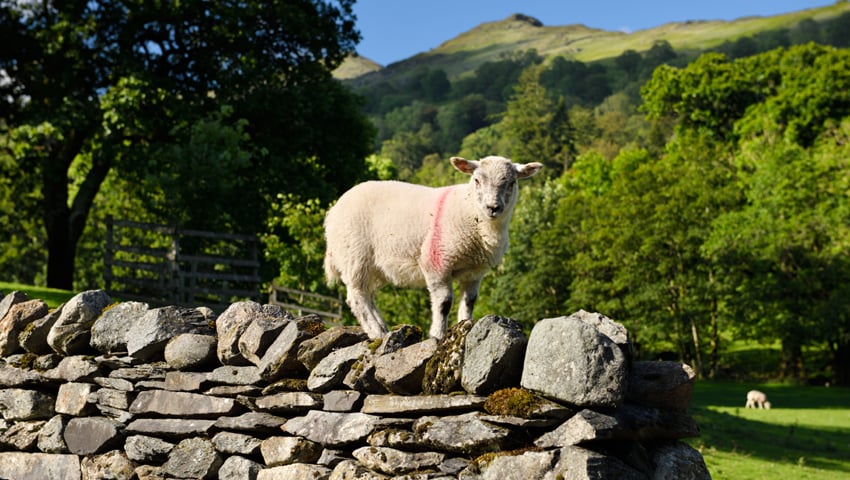Pasture for Life has been leading research into pasture-fed sheep farming, showcasing how it can be done.
Now the organisation has published four case studies, looking at how different sheep farmers in different regions of the UK with different systems are all focussing on pasture-fed sheep production.
The case studies focus on a number of topics, from land management (grazing and infrastructure) and animal welfare (ewe nutrition and condition), to biodiversity and economic benefits.
Case study 1: Clive and Lydia Handy
Lower Hampen Farm, Andoversford, Gloucestershire is owned and farmed by Clive and Lydia Handy – it’s 330 acres, made up of 2/3 arable and 1/3 permanent pasture. The soil is Cotswold Brash and the farm ranges from 700 – 900ft above sea level.
The arable land has been no till for around 11 years, and they have gradually reduced their use of chemicals over the last 15 years and now the only chemical they use is a low dose of glyphosate before arable crops.
Case study 2: Olly and Rachel Walker
Essebeare Farm, Witheridge, Devon is run by Olly and Rachel Walker. It is a 229-acre farm, situated 200m above sea level on a silty clay loam soil. Olly and Rachel have been tenants at Essebeare Farm since 2015.
They have been members of Pasture for Life for 4 years and the cattle and beef enterprises have also been certified for this period. The farm was also put into organic conversion in 2018.
Case study 3: Dafydd Owen, Coed Coch, Abergele, North Wales
Coed Coch Farm, Abergele is a 900-acre farm in North Wales. The farm includes 300 acres of lowland grazing and 600 acres of higher ground (LFA improved). The highest point on the farm is 1200ft above sea level.
The farm has very thin soil, it is free draining and therefore quite dry land.
Coed Coch Farm has had sheep on it since the 1970s with the current owner, previously it was a large Welsh Mountain pony stud, but also had sheep. Beef cattle were kept at the farm from the 1970’s until the farming partnership started 6 years ago.
Today there are 2000 Romney ewes on the farm and 120 contract grazed dairy heifers during the summer months.
Case study 4: Ben and Julia Jones
Ffynnonau Farm, Hillside Beef and Lamb is a 135 acre farm near Abergavenny. The farm has 65 acres suitable for sheep grazing, other parts of the farm are parklands or hay meadows which do not have suitable boundaries to keep sheep from the main road.
The farm has a mixture of sandy and silty loam soils, with a huge variation from the floodplain meadows to the top of the Clytha Hill which is very stony soil.
